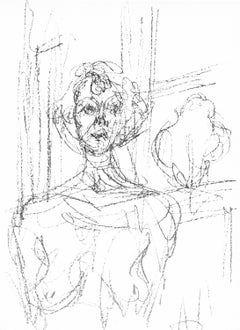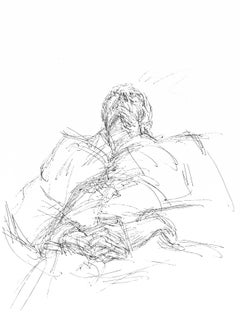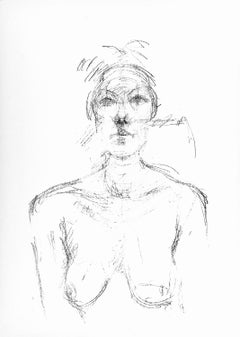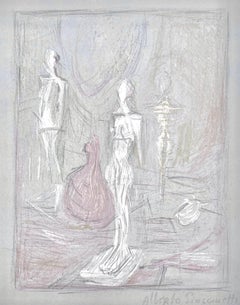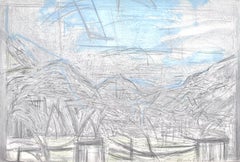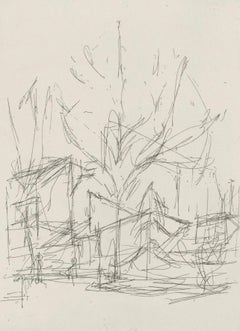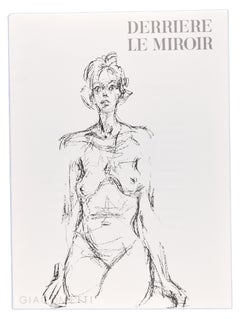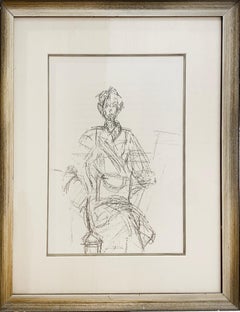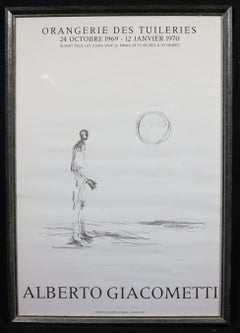Alberto Giacometti On Sale
1960s Modern Abstract Prints
Lithograph
1960s Modern Abstract Prints
Lithograph
1960s Modern Abstract Prints
Lithograph
1950s Modern Abstract Prints
Lithograph
1950s Modern Abstract Prints
Lithograph
1960s Surrealist Figurative Prints
Etching
1960s Portrait Prints
Lithograph
Recent Sales
1960s Surrealist Portrait Prints
Lithograph
Mid-20th Century Abstract Abstract Prints
Lithograph
1960s Portrait Prints
Lithograph
1960s Realist Still-life Prints
Lithograph
1950s Expressionist Figurative Prints
Lithograph, Paper
1960s Realist Still-life Prints
Lithograph
1960s Realist Interior Prints
Lithograph
People Also Browsed
Early 2000s Minimalist Abstract Prints
Lithograph
Antique 17th Century Italian Baroque Figurative Sculptures
Wood
Vintage 1960s French Mid-Century Modern Prints
Paper
2010s South African Minimalist Pedestals
Wood, Poplar, Burl
Mid-20th Century Modern Figurative Prints
Lithograph
21st Century and Contemporary Italian Mid-Century Modern Wall Lights and...
Brass, Metal
1950s Cubist Abstract Prints
Lithograph
Vintage 1950s Japanese Mid-Century Modern Floor Lamps
Bamboo, Paper
2010s Contemporary Landscape Paintings
Charcoal, Carbon Pencil
1970s Modern Abstract Prints
Lithograph
21st Century and Contemporary Portuguese Modern Pedestals
Onyx, Marble, Gold Leaf
Vintage 1960s Danish Mid-Century Modern Night Stands
Oak
Late 20th Century German Post-Modern Chairs
Paper
2010s French Modern Chairs
Oak, Fabric, Bouclé
Vintage 1950s Swiss Mid-Century Modern Prints
Paper
2010s Contemporary Still-life Sculptures
Glass
Alberto Giacometti for sale on 1stDibs
Alberto Giacometti was a painter, printmaker and furniture designer but he is best known as one of the 20th century’s most important sculptors. He is revered for the elongated, slender human figures he created in the years following World War II that reflected existentialism and the trauma associated with the conflict.
Giacometti was born in Borgonovo, Switzerland, in 1901 to a creative family. His father Giovanni was a Post-Impressionist painter, his godfather Cuno Amiet was a Fauvist painter, his brother Bruno was an architect, and his other brother Diego was an artist and furniture designer who also served as Giacometti’s model. (The sculptor worked chiefly with models plucked from his personal life.)
Beginning in 1922, Giacometti studied at the Académie de la Grande-Chaumière in Paris and was influenced by the Cubist work of Alexander Archipenko, Raymond Duchamp-Villon and the post-Cubist sculptures of Jacques Lipchitz and Henri Laurens.
During the 1930s, Giacometti designed furniture such as lamps, vases and wall décor to earn a living, often collaborating with interior designer Jean-Michel Frank, whose interiors tastefully mixed extravagance with sophisticated simplicity. However, Giacometti’s passion lay in creating sculptures.
Alberto and his brother Diego left Paris in 1940 to escape the Nazi invasion and spent time in the South of France before fleeing to Geneva, remaining there until 1946. In 1947, Giacometti began work on his most famous sculptures — very tall and thin figurines that came to be associated with frailty and loneliness.
Giacometti catapulted to fame in the United States following two exhibitions of his sculptures in 1948 and 1950 at the Pierre Matisse Gallery in New York City — Jean-Paul Sartre authored the catalogue essay for the latter. In 1961, Giacometti’s friend, Irish playwright Samuel Beckett, asked him to design the set for a re-staging of his play “Waiting for Godot.” His response took on the form of a single plaster tree.
In 1962, Giacometti won the grand prize for sculpture at the Venice Biennale, and for much of the rest of his career, he created modern paintings, drawings and sculptures of plaster, clay and bronze in his small Paris studio. He died in 1966.
Giacometti’s works continue to enthrall collectors. In 2010, his life-size bronze sculpture L'Homme qui marche (“the man who walks”), which now adorns the 100 Swiss Franc banknote, became one of the most expensive sculptures to be sold at auction.
On 1stDibs, discover a range of vintage Alberto Giacometti wall decorations, prints and sculptures.
Finding the Right Prints And Multiples for You
Decorating with fine art prints — whether they’re figurative prints, abstract prints or another variety — has always been a practical way of bringing a space to life as well as bringing works by an artist you love into your home.
Pursued in the 1960s and ’70s, largely by Pop artists drawn to its associations with mass production, advertising, packaging and seriality, as well as those challenging the primacy of the Abstract Expressionist brushstroke, printmaking was embraced in the 1980s by painters and conceptual artists ranging from David Salle and Elizabeth Murray to Adrian Piper and Sherrie Levine.
Printmaking is the transfer of an image from one surface to another. An artist takes a material like stone, metal, wood or wax, carves, incises, draws or otherwise marks it with an image, inks or paints it and then transfers the image to a piece of paper or other material.
Fine art prints are frequently confused with their more commercial counterparts. After all, our closest connection to the printed image is through mass-produced newspapers, magazines and books, and many people don’t realize that even though prints are editions, they start with an original image created by an artist with the intent of reproducing it in a small batch. Fine art prints are created in strictly limited editions — 20 or 30 or maybe 50 — and are always based on an image created specifically to be made into an edition.
Many people think of revered Dutch artist Rembrandt as a painter but may not know that he was a printmaker as well. His prints have been preserved in time along with the work of other celebrated printmakers such as Pablo Picasso, Salvador Dalí and Andy Warhol. These fine art prints are still highly sought after by collectors.
“It’s another tool in the artist’s toolbox, just like painting or sculpture or anything else that an artist uses in the service of mark making or expressing him- or herself,” says International Fine Print Dealers Association (IFPDA) vice president Betsy Senior, of New York’s Betsy Senior Fine Art, Inc.
Because artist’s editions tend to be more affordable and available than his or her unique works, they’re more accessible and can be a great opportunity to bring a variety of colors, textures and shapes into a space.
For tight corners, select small fine art prints as opposed to the oversized bold piece you’ll hang as a focal point in the dining area. But be careful not to choose something that is too big for your space. And feel free to lean into it if need be — not every work needs picture-hanging hooks. Leaning a larger fine art print against the wall behind a bookcase can add a stylish installation-type dynamic to your living room. (Read more about how to arrange wall art here.)
Find fine art prints for sale on 1stDibs today.
